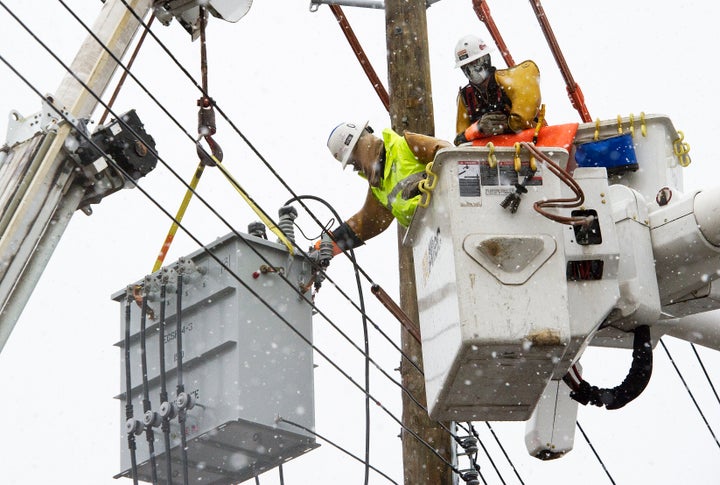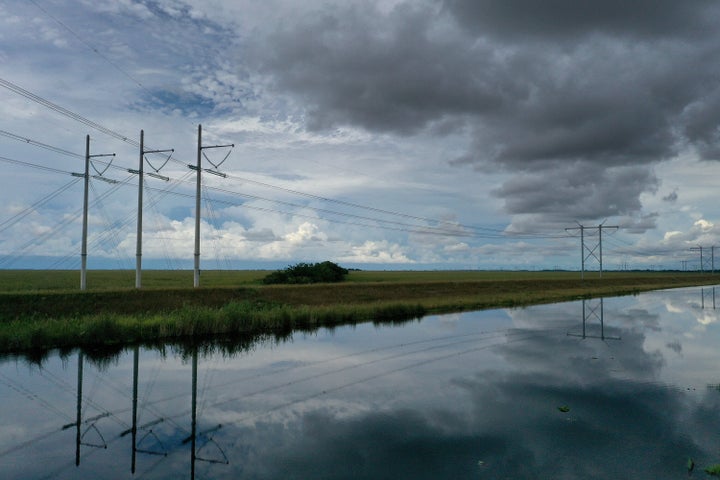In the years before the United States’ aging network of electrical grids began heaving under the pressure of record-breaking storms and heat waves, demand for transformers — the connective tissue of the power system — kept pace with the construction of new housing.
Those days are over. Now extreme weather regularly destroys hundreds of transformers at a time and drives up demand for more electricity on scorching or smoky days when cooling or purifying the air indoors saves lives. Preventing that crisis from getting worse means using electricity instead of fossil fuels for cars and heating while also generating a lot more of that power from sources such as solar panels and wind turbines. Those renewables, in turn, require a much larger and more expansive grid system — and a lot more transformers.
Manufacturers were in a bind. Building new assembly lines to churn out more of the transformers in current use would cost millions. The Biden administration, meanwhile, had proposed a new rule raising the energy-efficiency standards for transformers sold after 2027, requiring factories to start using a different kind of steel and invest in equipment that could not produce what’s currently in demand.
Facing backlash, the Department of Energy dialed back the regulation, unveiling a finalized proposal Thursday that almost completely reversed one of U.S. manufacturers’ biggest sticking points and gave companies five years to comply.
“The regulatory process can work, and this final rule shows just that by reflecting feedback from a broad spectrum of stakeholders,” Energy Secretary Jennifer Granholm said in a statement. “Ultimately, it will be a piece of the solution, rather than a barrier, to help resolve the ongoing distribution transformer shortage and keep America’s businesses and workers competitive.”

PAUL J. RICHARDS via Getty Images
Transformers function like locks in a canal, adjusting the voltage of electricity like water levels as it travels through different parts of the grid system from power plants to wall outlets. Energy is lost each time volts pass through thousands of transformers. Since the majority of U.S. generating stations burn fossil fuels to make electricity, that increase adds more planet-heating pollution.
The Biden administration’s initial proposal would have mandated that manufacturers make transformers with a type of steel that wastes less energy. This amorphous alloy of electrical steel is commonly used in transformers in parts of Asia that built their grid systems more recently. It’s also needed for electric vehicles, and the Energy Department had hoped that switching to amorphous steel transformers would streamline things for steelmakers.
But factories already struggling to keep up with demand complained that spending millions on the machines to ramp up production of the existing transformers could spell financial ruin if those investments became worthless in just a few years.
The original rule would have required amorphous steel for 95% of new transformers. The final proposal reverses that requirement, allowing the traditionally used grade known as “grain-oriented electrical steel” in at least 75% of new transformers.
But the new standards still ratchet up efficiency of new transformers by enough to shave what the Energy Department estimated would be $14 billion off utility bills over the next 30 years, slashing the equivalent of 11 million American homes’ annual output of carbon emissions.
“It seems like a compromise solution that maintains the Biden administration’s commitment to reducing emissions while allowing more time for the industry to adjust to updated standards,” said Johan Cavert, a policy analyst at the Niskanen Center, a think tank that tracks energy issues. “Regardless, the urgent transformer shortage remains a pressing and growing concern.”
Still, environmentalists criticized the Biden administration’s decision to loosen the proposed regulation.
“These standards significantly reduce energy waste, but they leave much bigger savings on the table,” Andrew deLaski, executive director of the watchdog Appliance Standards Awareness Project, said in a statement. “Passing up the savings that could have been achieved has a real cost for consumers, businesses and the climate.”

Joe Raedle via Getty Images
But the National Rural Electric Cooperative Association said the tiny nonprofit power companies it represents, which serve nearly 42 million Americans living far from major cities, faced problems replacing transformers, particularly when competing for equipment with deep-pocketed corporate utilities for equipment in short supply.
While federal regulators’ initial proposal “would have upended the entire market for distribution transformers at a time when manufacturers could not keep up with demand for this critical equipment,” the industry group said the Energy Department’s revised rule was “much improved.”
“The final rule provides stability for most of the market, while affording a more gradual shift toward tighter efficiency standards for transformers used to meet larger commercial and certain electrification loads,” Louis Finkel, the trade association’s senior vice president of government relations, said in an email. “We will work closely with our members, manufacturers and suppliers to ensure implementation does not further disrupt an already strained supply chain.”
ERMCO Inc., a major manufacturer of transformers for electric co-ops, told HuffPost it was “actively reviewing the rule in detail and at this point don’t have a formal position.”
“ERMCO does believe backing away from the original standards was positive and we appreciate the added time for implementation,” Tim Mills, ERMCO’s chief executive, said in an email. “We should know shortly whether or not the movement made keeps our confidence high on being able to provide transformers at or above our current level of production.”
Cavert warned that the new regulation alone won’t solve the transformer shortage, and said Congress should pass legislation providing more subsidies for manufacturers, new job training for workers, and federal programs to support the creation of an emergency reserve of transformers.
“The regulatory process can work, and this final rule shows just that by reflecting feedback from a broad spectrum of stakeholders.”
– Energy Secretary Jennifer Granholm
Pennsylvania Gov. Josh Shapiro (D) took credit for helping to convince the Biden administration to back off the initial proposal, which he said would have cost jobs at steelmaker Cleveland-Cliffs’ Butler Works facility, which generates much of the country’s grain-oriented electrical steel.
“I engaged directly with Secretary Granholm and the Biden administration to ensure Pennsylvanians’ concerns about the proposed rules were heard, and I want to thank them for making sure the final rule will allow for Butler Works to continue its existing line of steel production in Western Pennsylvania,” Shapiro said in a news release. “As a result, we have saved thousands of union jobs at the Cleveland-Cliffs Butler Works facility.”
Rep. Marcy Kaptur (D-Ohio), whose state also produces traditional electrical steel, also thanked Granholm for “speaking with me about this issue”
“The final rule strikes the appropriate balance between lowering energy costs for consumers, protecting national security, and supporting electrical grid resiliency and reliability improvements,” she said in a statement released as part of the Energy Department’s news release. “This decision will help protect Ohio jobs and consumers and ensure a domestic supply of transformers built in the Heartland.”
Along with Shapiro, Pennsylvania’s two Democratic senators, Bob Casey and John Fetterman, offered praise in quotes the agency sent out to reporters on Thursday morning. No Republicans were included in the announcement.
Sen. Cindy Hyde-Smith (R-Miss.) led the charge against Granholm’s first proposal at a Senate hearing last April. Democratic Sens. Martin Heinrich of New Mexico and John Hickenlooper of Colorado joined into the criticism to express concern over the rules.
The move comes as the Biden administration wades into tense negotiations over the potential sale of the U.S. Steel Corp., a giant of American industry, to a Japanese conglomerate.
President Joe Biden, who expressed support for keeping the steelmaker under U.S. ownership, has sought to revive American manufacturing through his landmark infrastructure laws while revving up the transition away from fossil fuels. Last week, the Biden administration announced $6 billion in projects to slash emissions from heavy industry, including projects to jumpstart “green” steelmaking in the U.S.
Yet Republicans have vowed to slow walk or dismantle key parts of the climate-spending statute Democrats passed in 2022, and funding is only beginning to trickle out to actual projects. Even if Biden managed to implement his climate laws to the fullest extent, climate modelers estimate that the U.S. would still need new policies to cut emissions.

